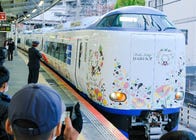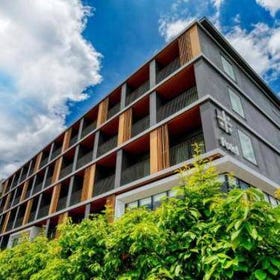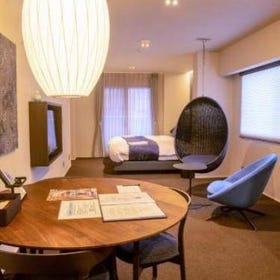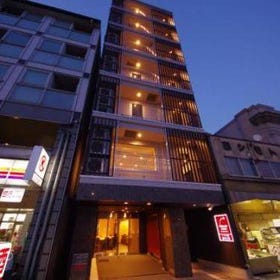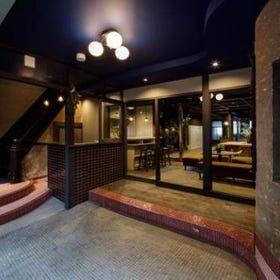
If any one city epitomizes the culture of Japan, then it has to be Kyoto, the old capital of Japan. This city, located in central Japan, offers plenty of diversions for culture and nature buffs alike. Kyoto is a lovely place to visit in any season, home to the Arashiyama Bamboo Forest, Nijo Castle, the Kyoto Imperial Palace, and literally hundreds of beautiful shrines and temples. This city of beauty retains the soul of Japan, so it’s no wonder that Kyoto is one of the leading destinations for visitors to Japan. And with a population of around 1.45 million, it’s also far larger than many might realize.
This guide provides an overview of the best places to stay in Kyoto while exploring its heritage and culture. It also shares some of the best hotels, ryokans, and other accommodations in Kyoto that will be perfect for your next trip. Pick your favorite and book with LIVE JAPAN!
Main image: PIXTA
1. How to choose where to stay in Kyoto City

Kyoto is a city of around 1.46 million (2020 census) that’s relatively spread out. As such, it is really important to carefully choose where you plan to stay.
When visiting Kyoto, you need to think about how long you will stay there, what are the essential places you want to see, and also what your overall accommodation and transport budget is. Preparation is key to getting the most out of your trip, and also getting the most out of Kyoto!
a. Ease of access to/from the airport
The nearest airports to Kyoto are in Osaka. But never fear: there is a direct express train from Kansai International Airport to Kyoto that takes just 75 minutes (the Haruka Limited Express; 3,430 yen o/w; covered under the Japan Rail Pass). If you have time to spare and want to save on costs, then you can take a local train to Osaka Station and then a direct train from Osaka Station to Kyoto Station (just under 2 hours, 1,910 yen o/w).
b. Ease of getting to sightseeing spots outside Kyoto City
Kyoto Station is on the Shinkansen (bullet train) network. It offers quick access both west toward Osaka and Hiroshima, and east toward Nagoya and Tokyo. There are also local trains to Osaka City, Nara, and many local destinations that cover the prefectures of Hyogo, Kyoto, Fukui, Gifu, Shiga, Mie, and Nara.
c. What is Kyoto City like?
Kyoto can be easily summed up as being exactly the kind of place most people might imagine: traditional, oozing with Japanese culture, and surrounded by history. As the historic home for many emperors and empresses, nobility, and religious officials, Kyoto saw the construction of numerous shrines and temples, and still has a stately palace. Kyoto remains famous for geisha. And it is also the birthplace of traditions such as the tea ceremony and flower arrangement.
The plan for Kyoto City was laid out in 794, and its oldest buildings date back more than 800 years. If you want to see the same sights as emperors and samurai did so long ago, this is the city to start with!
d. What’s there to do in Kyoto?
There are so many things to do in Kyoto! Kyoto City spans a wide area. As such, you can find peace and quiet on its outskirts, while enjoying the busy, vibrant streets of the center. The art of dining is very important in Kyoto, so you can find wonderful restaurants to enjoy a kaiseki dinner (formal dining). And the city has a wide variety of other kinds of restaurants – from the inexpensive to the luxurious. Kyoto is the kind of city where you can easily wander for hours, and is very different from most other cities in Japan.
In addition to being home to several museums (like the KYOCERA Museum of Art and the Kyoto National Museum), Kyoto has more than 2,000 shrines and temples. This doesn’t even consider the gardens and other sights found across this fantastic city – it even has the beautiful Nijo Castle and peaceful mountains.
e. What kinds of hotels are there in Kyoto?
Japan experienced a tourism boom in the 2010s, with much of this centered on Kyoto. As such, the city is well served by a variety of hotels catering to every kind of guest imaginable.
2. Where is the best area to stay in Kyoto City?
a. Kyoto Station Area: Perfect for Getting Around The City

The Kyoto Station Area is recommended for people who value convenience over other considerations. This transport hub offers direct access to nearly everywhere else in Kyoto by either train or bus, as well as direct access to cities outside of Kyoto. If you are looking for a quick stopover in Kyoto or somewhere with excellent transport links, this is the area for you.
i. Ease of access to/from the Kyoto Station Area
Kyoto Station is really well connected by buses, trains, and taxis. Kyoto also has a subway system. Since it is also on the Shinkansen (bullet train) network, it is also easy to get to Kyoto from Tokyo and Osaka.
ii. Type of neighborhood/atmosphere
Being a busy commuter and traveler hub, the nearby area isn’t quite as beautiful as a temple up a mountainside. Still, the Kyoto Station area has its own sightseeing spots and marks a pleasant starting point for your trip to the city. Remember that the buses and trains can be a bit crowded in the morning and evening during rush hour.
iii. Nearby sightseeing points of interest
Kyoto Station is within walking distance of Kyoto Tower, the Kamogawa River, and the magnificent Toji Temple, and offers direct access to most sightseeing spots within Kyoto. However, in addition, Kyoto Station itself is a massive beautiful station with excellent shopping, and the station roof offers a great view of the city.
Recommended hotels near the Kyoto Station Area
b. Gion/Kawaramachi/Kiyomizu-dera Temple Area (Central Kyoto): Enjoy Kyoto’s Geishas and Teahouses

The old streets of Gion are full of shops, restaurants, and teahouses, but more importantly, this is Kyoto’s most famous geisha area. The nearby downtown area of Kawaramachi is renowned for its stores and the Kamogawa River that runs through it, while at Kiyomizu-dera Temple, your breath will be carried away on 1200 years of history. It is also a really convenient area which is perfect for family trips.
i. Ease of access to/from the Gion/Kawaramachi/Kiyomizu-dera Temple Area
This area is well served by the Hankyu Kyoto Main Line and the Tozai Line subway. Both are mere minutes from Kyoto Station and offer direct access to Gion and Kawaramachi.
Meanwhile, Kiyomizu-dera Temple is a little further out. From Kyoto Station, it is best to either take a bus to Kiyomizu-michi and then walk for 10 minutes, or take the Keihan Railway Line to Kyomizu-Gojo Station and then walk for 20 minutes.
ii. Type of neighborhood/atmosphere
Gion will make you feel like you have traveled hundreds of years into the past and is the perfect kind of location to get lost in, while Kawaramachi blends the new and the old. Kiyomizu-dera Temple is up a mountainside and is surrounded by beautiful nature. It is very famous for its wooden stage, which was made without using nails, and which offers a gorgeous view of Kyoto. During cherry blossom season, crowds flock here for its beautiful view of cherry blossom trees.
iii. Nearby sightseeing points of interest
In Gion, it is also recommended to check out Kenninji Temple and Yasaka Shrine, while the Shirakawa Canal is a lovely tree-lined canal that features many restaurants. Staying in this area also offers easy access to the Kyoto Imperial Palace area and also the Nanzenji Temple area.
Recommended hotels in the Gion/Kawaramachi/Kiyomizu-dera Temple Area (Central Kyoto)
c. Nijo Castle/Kyoto Imperial Palace Area: Where to stay in Kyoto for ‘Kyoto in the movies’

Nijo Castle is one of the seventeen Historic Monuments of Ancient Kyoto, and also one of the settings for movies. Kyoto Imperial Palace was where all important events held by the royal family were held until just a few decades ago.
i. Ease of access to the Nijo Castle/Kyoto Imperial Palace Area
This part of Kyoto is well served by several train stations, including Nijoji-mae Station on the Tozai Line which is 14 minutes from Kyoto Station via the Karasuma and Tozai lines (260 yen o/w) and Marutamachi Station on the Kyoto Municipal Subway Karasuma Line, which can be reached in 7 minutes directly from Kyoto Station (260 yen o/w).
ii. Type of neighborhood/atmosphere
The streets of Kyoto form regular rectangular blocks until they reach the massive Kyoto Imperial Park, which surrounds Kyoto Imperial Palace, and while these streets convey a slightly 1970s impression – the area is overwhelmed by the beauty and majesty of the imperial grounds. If you want to stay somewhere close to both Kyoto Station while feeling something of the history of Kyoto, then you can’t go wrong with a stay in this area.
iii. Nearby sightseeing points of interest
Nijo Castle and Kyoto Imperial Palace are in themselves enough to fill a whole day of sightseeing, but in addition you can pretty much walk in any direction and discover any number of shrines and temples! In addition, Kyoto Imperial Park is just a few blocks away from Kamogawa River which is great for riverside walks while you reflect on the beauty of Kyoto.
Recommended hotels around the Nijo Castle/Kyoto Imperial Palace area
d. Ginkakuji Temple/Nanzenji Temple Area: Enjoy Kyoto’s Beautiful Eastern Side

Almost as famous as Kinkakuji Temple (Golden Pavilion), Ginkakuji Temple is also known as the Silver Pavilion. Located in Kyoto’s eastern mountains, it is a 30-40 minute walk along the Philosopher’s Path from Nanzenji Temple – which is itself one of the most important Zen temples in Japan. Accommodation in this area is perfect for those looking for far-reaching landscape shots from the mountainside.
i. Ease of access to/from the Ginkakuji Temple/Nanzenji Temple Area
Ginkakuji Temple is somewhat out of the way, but there is a direct bus from Kyoto Station, which takes up to 40 minutes (230 yen o/w), but the area around Nanzenji Temple can be reached from Keage Station, which is on the Tozai Line (20 minutes from Kyoto Station, 260 o/w). If you are planning to spend a day or more exploring this area, staying somewhere nearby is recommended.
ii. Type of neighborhood/atmosphere
Nanzenji Temple is very large and has multiple sub-temples all located at the base of the Higashiyama Mountains. The oldest buildings date back hundreds of years, which against their forested mountainous background, can almost make you feel like you have traveled back in time. The area up to the temple from the station is made up of narrow streets and old temples, and you need to walk back toward Kyoto to find more modern conveniences.
iii. Nearby sightseeing points of interest
For those willing to brave the hike into the mountainside, there are a number of temples and sightseeing spots to discover, ranging from Dainichiyama Cemetery and Himukai-Daijingu Shrine to the breathtaking fall foliage of Eikan-dō Temple (Zenrin-ji Temple). Away from the mountain range, you can find Kyoto City Zoo and Okazaki Park, also near Heian Shrine.
Recommended hotels near Ginkakuji Temple/Nanzenji Temple Area
e. Arashiyama/Uzumasa Area: The Place for Bamboo Groves!

If you are looking for forested mountains, wide rivers, and an absolutely brain-stunning bamboo grove, then Arashiyama is the area for you! Uzumasa can be found en route to Arashiyama from Kyoto Station, and it is used as the setting for many historical dramas. If you are looking for natural beauty, you need not look any further.
i. Ease of access to/from the Arashiyama/Uzumasa Area
Uzumasa Station can be reached in just 13 minutes from Kyoto Station (200 yen o/w) via the Sanin Line, while a couple more minutes on the same line will get you to Saga-Arashiyama Station (240 yen o/w). From this last station, it is a 5 to 10-minute walk to central Arashiyama.
ii. Type of neighborhood/atmosphere
Being in this area really means touching both nature and human history. Be awed by forested hills and mountains that rise above Togetsukyo Bridge, enjoy pleasure boats on the Hozugawa River, and get lost in the region’s bamboo groves and many, many, temples.
iii. Nearby sightseeing points of interest
Besides the above, you can also visit Monkey Park Iwatayama, experience residences that are hundreds of years old like the Rakushisha Residence, take photos in the moss garden of Gioji Temple, and be inspired by the hundreds of statues at Adashino Nenbutsuji Temple and Otagi Nenbutsu-ji Temple. Alternatively, experience Toei Kyoto Studio Park in Uzumasa to see a part of Japan’s movie and drama world.
Recommended hotels in the Arashiyama/Uzumasa Area
f. Outside Kyoto City: Enjoy Beautiful Nature Outside This Gorgeous City

While Kyoto City itself is absolutely gorgeous, there is so much beautiful nature outside of the city that shouldn’t be missed. Kyoto Prefecture has a lot to offer for people who love being in the countryside, so why not try some authentic green tea or one of Japan’s three famous sites!
i. Uji
If you are struggling to find suitable accommodation, then why not try the nearby city of Uji – Japan’s Uji green tea capital! Uji Station is just under 17 minutes from Kyoto Station via the Nara Line Sub Rapid (240 yen o/w). This city is charming and also has its own unique sightseeing spots like the National Treasures of Byodoin Temple or trying out Uji green tea at the Fukujuen Uji Tea Factory.
Uji is a very relaxed city and is perfect for families and couples who want a more relaxed pace of life and to check out a place that isn’t quite as bustling as Kyoto.

ii. Amanohashidate
Amanohashidate is a place that has to be seen to be believed – though do keep in mind that it takes up to three hours to get here from Kyoto Station (2,320 yen o/w via the Tantetsu Miyamai-Miyatoyo, Tantesu Miyafuku Commuter Liner and the Sanin Line).
When you arrive, though, a mere 7-minute walk will put you on Amanohashidate Beach and one of Japan’s three famous views. Enjoy a long sandy beach on a narrow strip of pine-forested land that connects Amanohashidate with Miyazu.
Due to the distance of this - known as "Kyoto by the Sea," it is more suited for solo travelers and couples – and though it may be a long trip from Kyoto Station, it is worth it!
3. Types of accommodation in Kyoto City

a. Ryokan
A ryokan is a kind of traditional accommodation in Japan that features tatami (straw mat) rooms, sleeping on futons (bedding) that are placed directly on the floor, and which often allows you to enjoy the experience of an onsen (hot spring bath) and to wear traditional Japanese clothing (yukata). If you are within the traditional settings of Kyoto, then it makes perfect sense to stay at a ryokan – when in Rome!
Recommended Ryokan in Kyoto
b. Hotels
・Best luxury hotels in Kyoto|a=https://www.booking.com/fivestars/city/jp/kyoto.html?aid=1725679&label=a2000730|b@> (Booking.com)
・Best mid-range hotels in Kyoto (Booking.com)
・Best hotels in Kyoto for families (Booking.com)
・Best budget hotels in Kyoto (Booking.com)
c. Business hotels
These kinds of hotels tend to be very economical, so the rooms tend to be quite small and basic. However, they are often found near train stations and the price per night can be quite reasonable. They are quite a good choice when you just literally need a bed and aren’t too concerned about creature comforts.
d. Capsule hotels
Capsule hotels offer a very different and unique kind of stay, one which first started in Japan. At these hotels, you can stay in a tiny capsule! Typically, you are given a small chamber which is about the size of a small bed, while facilities like toilets and showers are shared. They tend to be very cheap, but are not really suitable for people uncomfortable with being in a small space.
e. Hostels
Hostels and guesthouses, like the world over, offer really great accommodation at a reasonable price. In Japan they are typically safe, clean and quite often well located. Generally they are perfect for solo travelers or people in a small group, but some places have accommodation which is also suitable for families.
f. Vacation Rentals
Vacation rentals really took off in Japan after a change in the law in 2018, and now it is possible to stay at a range of different accommodation types. Although they can be more expensive than even budget hotels, there are many options available and often include entire apartments. However, it has to be kept in mind that the people in neighboring apartments are living there so you need to avoid creating disturbances, and in addition, Japan can have some quite strict garbage separation rules which you will need to follow.
g. Love hotels in Kyoto
Love hotels might sound a bit seedy, the original concept being a hotel where couples can have some private time, but over time these kinds of hotels have also become popular with tourists because they can be inexpensive, the rooms can be quite big and also because theme-type love hotels can be quite interesting! Another benefit is that you can normally book a room by the hour, so they are convenient for very short stays.
Recommended love hotels in Kyoto
4. When is the peak season for visiting Kyoto?

・February (college entrance exam season)
Kyoto and nearby Osaka in February can be pretty busy because of college entrance exams. At this time of year, high school students across the country descend on the colleges they want to study at to take entrance exams, and budget accommodation in Kyoto can be booked out by students, teachers, and even the families of students. Generally, more expensive accommodation is available as usual.
・Cherry blossom season (mid-late March)
Kyoto is home to many beautiful places for cherry blossoms, especially at and around temples. Expect crowds and a shortage in hotel rooms from around the middle of March.
・Golden Week (end of April / beginning of May)
Golden Week is one of the biggest public holidays in Japan, and depending on the days that the various public holidays fall on every year, it can last longer than a week. At this time, Kyoto is a massively popular destination for domestic tourism, so accommodation is often fully booked while public transport can be packed.
・Obon/Summer holidays
Obon is another big holiday that also features a big festival in Kyoto that ends with the lighting of giant bonfires. This makes Kyoto a very popular destination for both domestic and overseas tourists. Summer in Kyoto is very hot, so it is best to keep in mind that accommodation near transport hubs will make your life a little bit easier, but it is recommended to book in advance.
・Festival Season
It can also be difficult to find a hotel right before and during major festivals in Kyoto. This includes the periods of May 15 (when the Aoi Matsuri is held); July 14-24 (when the Gion Matsuri is held); and October 22 (when the Jidai Matsuri is held). Each of these festivals is very popular; the Gion Matsuri, for instance, can attract over a million visitors.
・Autumn foliage season (mid-November to early December)
Similar to the cherry blossom season, Kyoto is also famous for its stunning fall colors. Peak foliage season in Kyoto tends to be toward the end of November. It can be more challenging to find a hotel at this time, so be sure to check on hotel dates and make reservations well ahead of time.
・New Year Holiday
This is perhaps the second biggest public holiday of the year, with many people traditionally heading to their hometowns for family celebrations on New Year’s Eve. However, many people also head to Kyoto City to visit temples and shrines on New Year’s Day.
5. Where to search if Kyoto is booked

・Osaka
Osaka is Japan’s third-biggest city. It offers all the pleasures of a port city, including great food, historical buildings, and even theme parks. It also has convenient access to the smaller port city of Kobe.
・Away from major stations
During particularly busy times of the year, hotels near major stations and tourism areas can be booked up. However, if you look at hotels a bit further away from subway stations, you can often still find some availability. Kyoto has quite an extensive city bus network that takes travelers to all the major sightseeing spots, so checking out hotels on bus routes is a good idea.
Related Articles
- Area
- Category
*Prices and options mentioned are subject to change.
*Unless stated otherwise, all prices include tax.
Popular Tours & Activitiess
Recommended places for you
-

Kanzenkoshitsuyakinikutabehodai Gyugyu Paradise Sannomiya
Yakiniku
Kobe, Sannomiya, Kitano
-

Kambei Sannomiyahonten
Yakiniku
Kobe, Sannomiya, Kitano
-
Goods

Yoshida Gennojo-Roho Kyoto Buddhist Altars
Gift Shops
Nijo Castle, Kyoto Imperial Palace
-

Jukuseiniku-to Namamottsuarera Nikubaru Italian Nikutaria Sannomiya
Izakaya
Kobe, Sannomiya, Kitano
-

Tenryu-ji Temple
Temples
Arashiyama, Uzumasa
-

ISHIDAYA Hanare
Yakiniku
Kobe, Sannomiya, Kitano
-

November Events in Kansai: Fun Festivals, Food, and Things to Do in Kyoto & Osaka
-

A First Look at NEMU RESORT’s 2026 Grand Renewal in Ise-Shima: A Resort Shaped by Village, Sea, and Forest
by: Guest Contributor
-

New Way to Reach Koyasan! Ride Nankai's 'GRAN Tenku' for a Heavenly Journey
by: Guest Contributor
-
Ad

Experiencing Manga as Culture, Not Just Reading It: Expo 2025 with Rumiko Takahashi
-
Ad

Café Bahnhof in Osaka: The home-roasted coffee that captivated G20 leaders!
-
Ad

Recharge and Relax with a Healing Getaway at Kamenoi Hotel Toba
Inspiration for Accommodations
-

Spacious Family Hotel in Namba: 20 Comfortable Stays for Family Fun
-

Charming Hotels to Enjoy the Spectacular Views of Arashiyama's Autumn Leaves from Your Room
-

Experience Stunning Views of Osaka Castle from Private Spaces: Top Hotels Near Osaka Castle
-

Recommended by Visitors! Arashiyama's Best-Rated Hotels
-

Family-Friendly Universal Studios Japan Hotel with Excellent Access
-

Enjoy a Comfortable Stay in Osaka! 10 Hotels with Convenient Airport Shuttle Services
-

Top 10 Recommended Hotels Near Namba Station with Great Access
-

Enjoy Night Views from Your Room! Recommended Hotels in Namba Area
-

Where to Stay in Umeda: 15 Top Hotels and Apartments For Every Traveler
by: Nemi Lin
-

Top 5 Hotels Near Kyocera Dome Osaka: Enjoy a Convenient Stay for Concerts or Events
by: WESTPLAN
-

Sowaka Kyoto: The Luxury Kyoto Ryokan With Incredible Access to Major Sights!
by: WESTPLAN
-

10 Important Japanese Phrases to Know Before You Enter a Japanese Convenience Store!
by: Teni Wada
-

Osaka Koreatown: In Search of the Best Eats in the Korean Roots of Osaka's Tsuruhashi Market
-

5 Best Dotonbori Hotels: Stay Right in the Bustling Heart of Osaka!
- #best gourmet Osaka
- #things to do Osaka
- #what to do in kyoto
- #what to bring to japan
- #best gourmet Kyoto
- #new years in Osaka
- #what to buy in nanba
- #Visiting Osaka
- #onsen tattoo friendly arima
- #daiso
- #Visiting Kyoto
- #best japanese soft drinks
- #japanese fashion culture
- #japanese convenience store snacks
- #japanese nail trends













